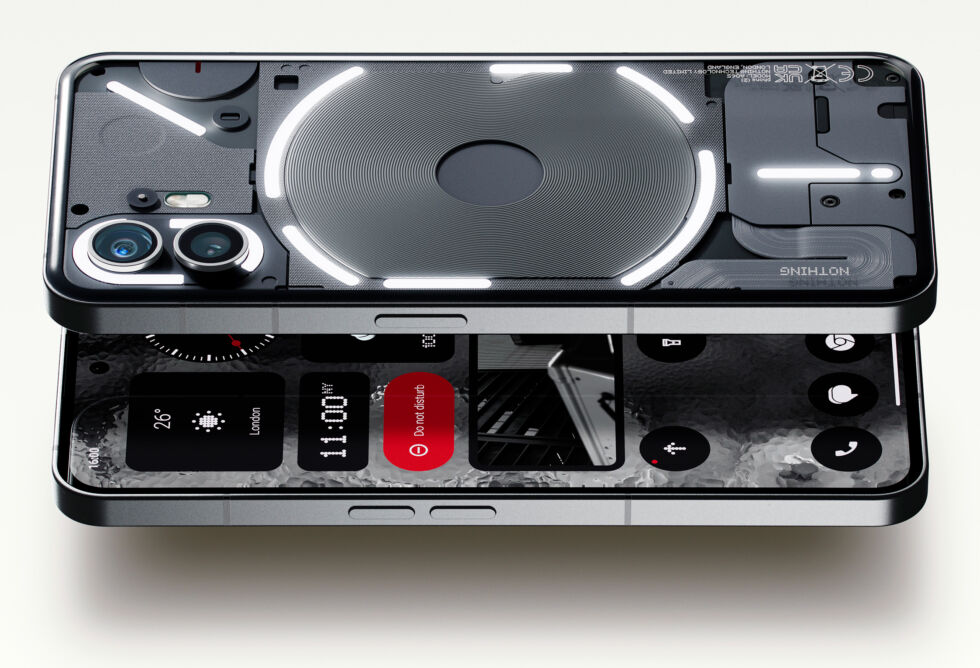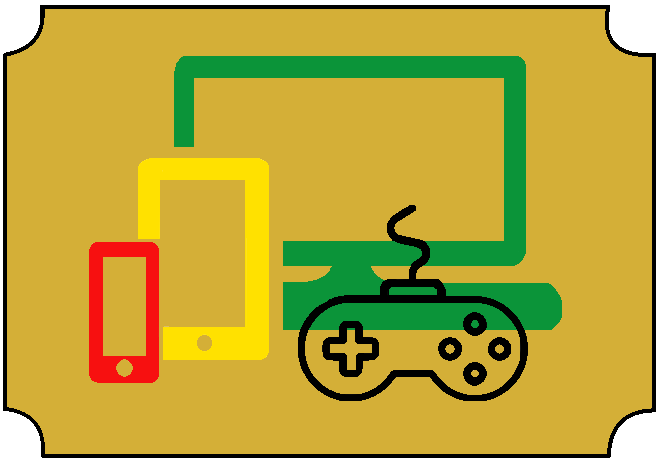All of my opinions are italicized and sources are in blue.

This is about the Nothing Phone(2). In case you were wondering, the title was created by using the whitespace character ( ).
This would be Nothing’s first phone that would be regularly sold in the U.S. Sadly, this phone does not support Verizon or other carriers that use Verizon’s primary 700 MHz LTE band.
For the SoC we have Qualcomm’s Snapdragon 8+ Gen 1. That makes this the first Nothing Phone with a flagship chip, though that is the 2H 2022 model, not the newer 8 Gen 2 chip. Then there’s a 6.7-inch 120 Hz, 2412×1080p OLED, 8GB of RAM, 128GB of storage, and a 4700 mAh battery with 45 W wired charging and 15 W wireless charging. The phone has an in-screen fingerprint reader. The worst part of the spec sheet is an IP54 rating for dust and water ingress, which means it can really only handle rain and isn’t submergible. For its cameras, you have a 50 MP Sony IMX890 sensor as the main sensor and a 50 MP Samsung JN1 sensor as the wide-angle. The front camera is a 32 MP Sony IMX615. The MSRP is $599, which is the same as the Pixel 7, another mid range phone.
The phone ships with Android 13 and has three years of Android OS updates and four years of security patches that will only arrive every two months. Skimping on security doesn’t sound great, and it’s not clear how good Nothing is going to be at Android updates. So far we have a single data point: The company took four months to deliver Android 13 to the Nothing Phone 1.
Nothing’s trademark is the transparent back of the phone. The lights on the back are used for notifications, calls, showing the battery percentage, and as a fill light for taking pictures. This time the LED system on the back uses individually addressable LEDs, so Nothing can do tricks like make one of the line segments fill up like a progress bar. This can indicate a timer, charging progress, or an Uber arrival time, thanks to new third-party integration.
The final verdict is the Phone(2) is a mid range phone with a flagship SoC and some fancy lights. The Phone(2) excels in performance compared to other mid range phones, but falls behind in camera performance compared to the Pixel 7. If you love the design and don’t use Verizon, consider this phone.
A California judge is allowing Microsoft to close its acquisition of Activision Blizzard after five days of grueling testimony. Microsoft still faces an ongoing antitrust case by the Federal Trade Commission, but Judge Jacqueline Scott Corley has listened to arguments from both the FTC and Microsoft and decided to deny the regulator’s request for a preliminary injunction. Judge Corley stated in the ruling “Microsoft’s acquisition of Activision has been described as the largest in tech history. It deserves scrutiny. That scrutiny has paid off: Microsoft has committed in writing, in public, and in court to keep Call of Duty on PlayStation for 10 years on parity with Xbox. It made an agreement with Nintendo to bring Call of Duty to Switch. And it entered several agreements to for the first time bring Activision’s content to several cloud gaming services”.
The very next day, the FTC appealed Judge Corley’s ruling. The FTC has sued to prevent the merger from happening over antitrust concerns. An administrative trial is set to start in August, but the companies have a merger deadline of July 18th. If the companies do not merge by then, Microsoft would have to pay a $3 billion termination fee. Microsoft still needs to resolve the issues of the UK’s Competition and Markets Authority (CMA) with its acquisition before it can close.
Amazon doesn’t want to comply with Europe’s Digital Services Act, and to avoid the rules the company is arguing that it doesn’t meet the definition of a Very Large Online Platform under EU law. Amazon filed an appeal at the EU General Court to challenge the European Commission decision that Amazon meets the criteria and must comply with the new regulations. Amazon also claims it’s unfair that some retailers with larger businesses in individual countries weren’t on the list of 19 companies that must comply with the Digital Services Act. The rules only designate platforms with over 45 million active users in the EU as of February 17. Those other companies Amazon referred to include Poland’s Allegro or the Dutch Bol.com, according to a Bloomberg report. Neither of those platforms appears to have at least 45 million active users. Companies have until August 25 to comply and could face fines of up to 6 percent of their annual revenue if they don’t. Companies will have to submit annual risk assessments and risk mitigation plans that are subject to independent audits and oversight by the European Commission. Amazon being forced into becoming more consumer focused is a good thing to everyone except Amazon.
LG Electronics has outlined its ambition to grow revenue from $51 billion company to $78 billion over the next six and a half years, thanks in part to ads streamed to its tellies and subscription services for its appliances. The company said on Wednesday “LG will innovate with a platform-based service business model that continuously generates profits, such as content and services, subscriptions and solutions, to the hardware-oriented businesses, which generate sales and profits at the time of purchase”.
The basic idea is LG wants you to subscribe to your fridge for extra cooling or subscribe to your dishwasher to clean dishes better. If your appliance has the ability to do something, then it should not be locked behind a subscription. LG is not going to make their appliances cheaper to counteract the cost, they will either stay the same price or increase. Subscriptions should only be used for services with recurring costs, such as video streaming. Paying a monthly subscription for hardware that you already paid hundreds of dollars for is a crime.
Project Tailwind, the AI-backed note-taking tool that Google launched at this year’s I/O developer conference, is rebranding. It’s now known as NotebookLM, and it’s launching today to “a small group of users in the US,” according to a Google blog post. The product hasn’t changed, though: Google’s still trying to give users their own personal AI, trained on their data and notes and able to help them make sense of it all. Google offers a few ideas for things you might do in NotebookLM, such as automatically summarizing a long document or turning a video outline into a script. Google’s examples, even back at I/O, seemed primarily geared toward students: you might ask for a summary of your class notes for the week or for NotebookLM to tell you everything you’ve learned about the Peloponnesian War this semester. Google says that the NotebookLM model only has access to the documents you choose to upload and that your data is neither available to others nor is it used to train new AI models. This is one of the trickiest parts of a product like this: Google is asking users to give their private information to an AI model in exchange for some convenient and useful features, and that tradeoff gets more complicated the more sensitive the information becomes.

As The Register reported last year, openKylin has been in development for some years. It reached version 0.9.5 at the start of 2023, and now the finished release 1.0 is available, codenamed “Yangtze” after the great river of China. While many outlets have called this China’s “homegrown open-source desktop OS”, it is based on the Linux distro Ubuntu. The desktop looks very similar to the one in Ubuntu Kylin 22.04, but it had no problems with VirtualBox’s 3D acceleration and didn’t default to dark mode as that release did. The default web browser is Firefox, and the office suite is WPS Office. There’s a Chinese language app store, complete with a Mobile section for Android apps, although the Kmre runtime wouldn’t start under Virtualbox. OpenKylin 1.0 is an attractive, modern distro with a pleasing desktop and some nice additional features. What it’s not is the first all-Chinese FOSS operating system, or even the first all-Chinese Linux distro. It’s Ubuntu.

Man tried to smuggle 420 M.2 SSDs into China from Macau
Pokémon Sleep, track your sleep and receive Pokémon
YouTuber training rat neurons to play Doom
Want to feel like you are being stabbed? Play Assassin Creed Mirage with a haptic vest
Indie game studio admits to “hypothetically” spying on employees to prevent burnout
